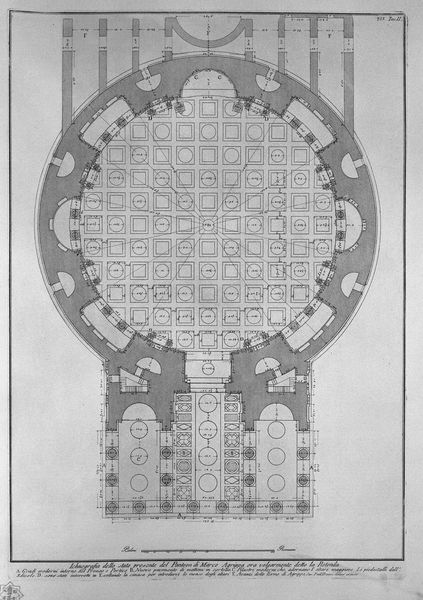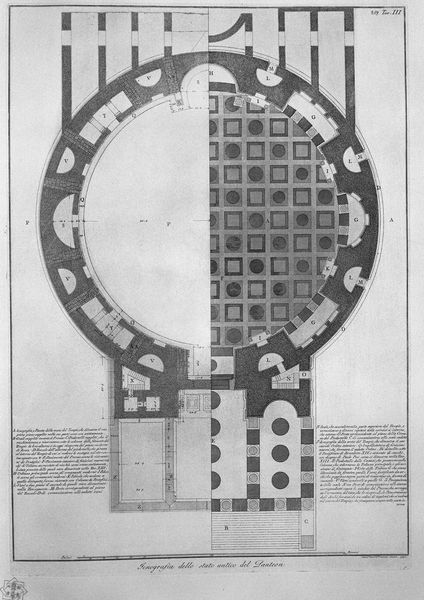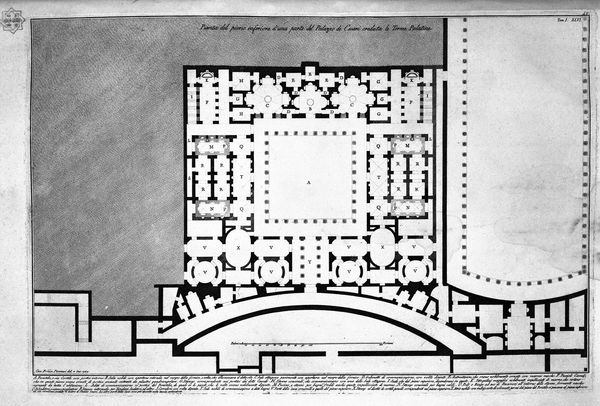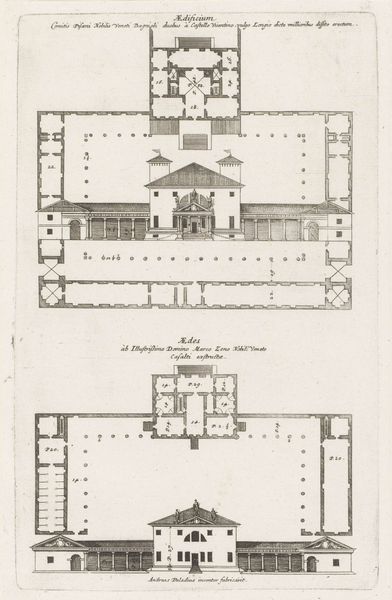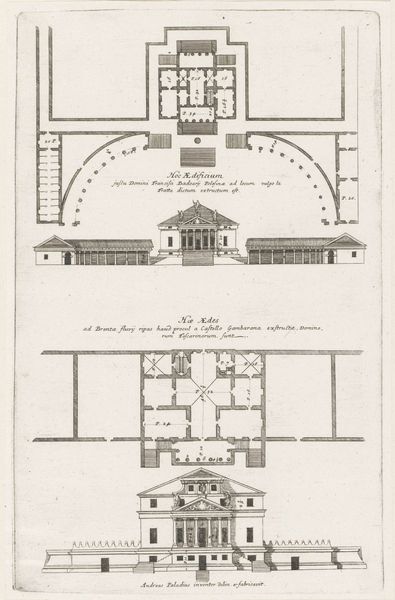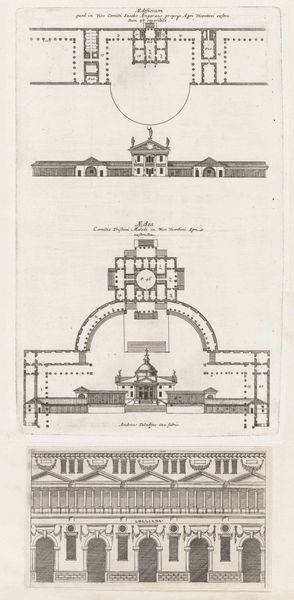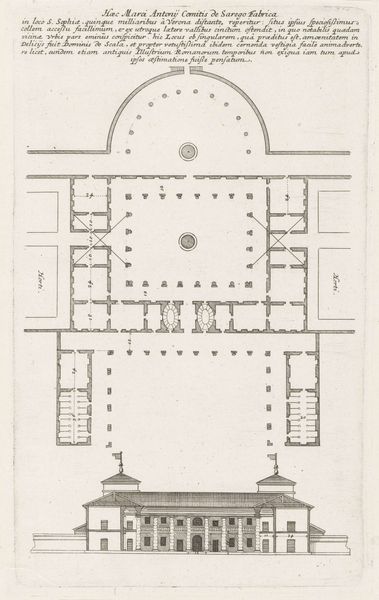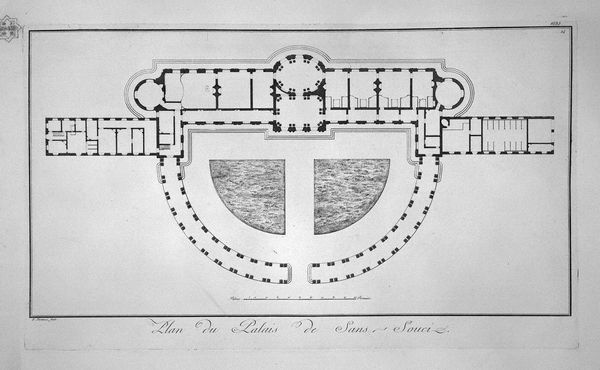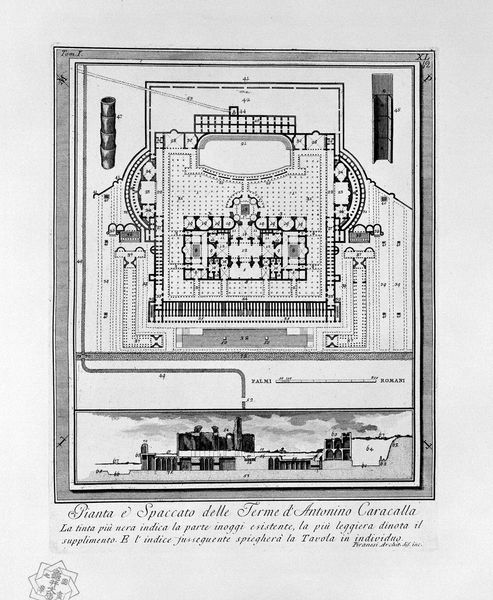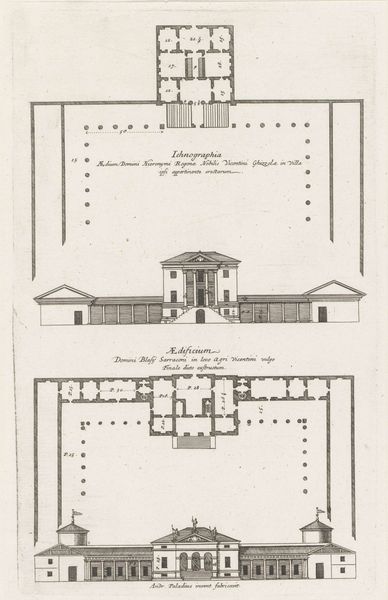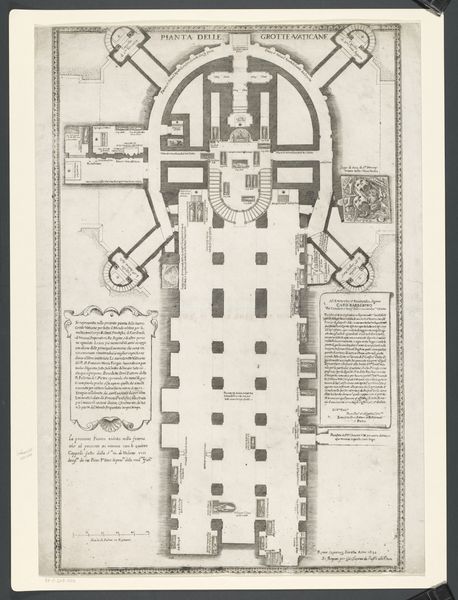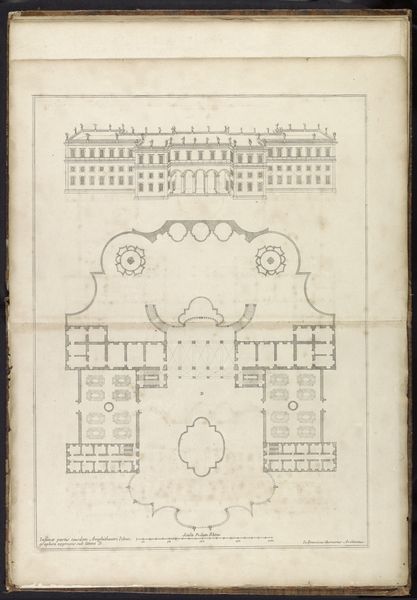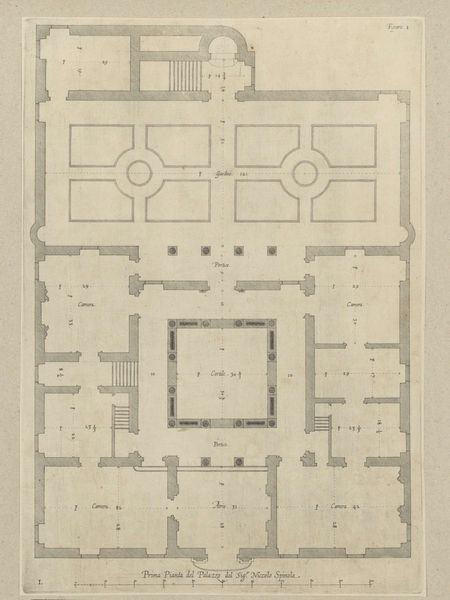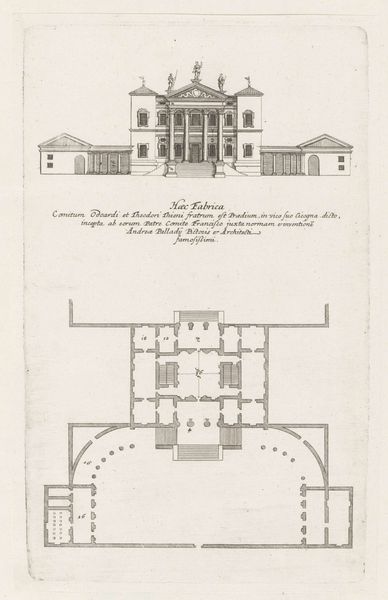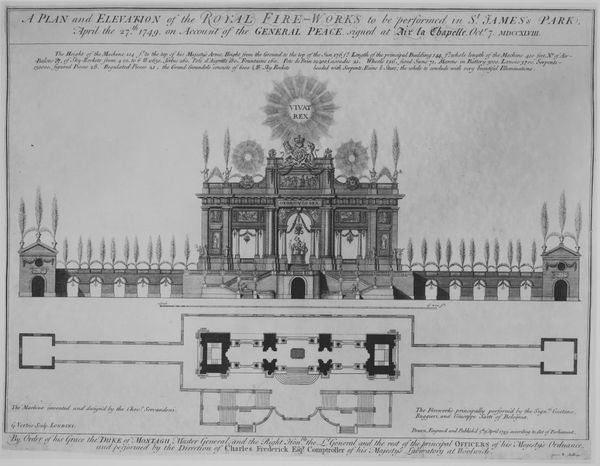
The Roman antiquities, t. 2, Plate XLIII. Plan and elevation of a burial chamber. 1756
0:00
0:00
drawing, print, etching, engraving, architecture
#
drawing
# print
#
etching
#
romanesque
#
geometric
#
arch
#
line
#
history-painting
#
engraving
#
architecture
Copyright: Public domain
Curator: This somber etching and engraving by Giovanni Battista Piranesi, created around 1756, is titled "The Roman antiquities, t. 2, Plate XLIII. Plan and elevation of a burial chamber." It presents a meticulously detailed architectural rendering. My first thought is the geometry feels almost oppressive; very rigid. Editor: Yes, there's a real sense of architectural authority here. It speaks to the eighteenth-century fascination with classical antiquity, particularly the architecture of power and memory embodied by Roman burial structures. What do we know of its function? Curator: Piranesi’s work existed at the intersection of documentation and reimagining. While purporting to depict extant Roman ruins, he often embellished and even invented elements, contributing to the era's obsession with the grandeur of Rome's past. It challenges us to question the politics embedded in the archaeological gaze, whose stories are valued? Editor: True. And the formal arrangement strengthens that impression, no? The crisp lines defining each block, each archway. Note also the graphic division—elevation above, plan below, linked by that "Scala di Palmi" scale—constructing a hierarchy of perspectives. The material quality, etched and engraved, yields sharp contrasts, deepening the shadows and solidifying the structure’s imposing presence. It projects permanence. Curator: Considering how it was created is crucial; its reproductive quality democratized images of Roman history and architecture during that time. Yet who did this so-called "democratization" benefit? I'd wager access to these depictions was overwhelmingly biased towards affluent white European men who validated their status through possession of the classics. Editor: Point taken. However, one cannot dismiss Piranesi’s virtuosity with line and form; even though he also captured and reinforced specific biases through his choices of subject and style. The clarity, precision. It compels an emotional, almost reverential, response, regardless of the viewers circumstances. Curator: Ultimately, this image prompts reflection on cultural ownership, narrative construction and legacies. Piranesi's rendering does more than showcase an architectural plan; it reveals who has license to write and control the past. Editor: Precisely, the architectural diagram unveils not only Roman burial chambers but the mechanics of cultural appropriation and narrative sculpting inherent in archaeological pursuits, influencing historical comprehension across time.
Comments
No comments
Be the first to comment and join the conversation on the ultimate creative platform.
